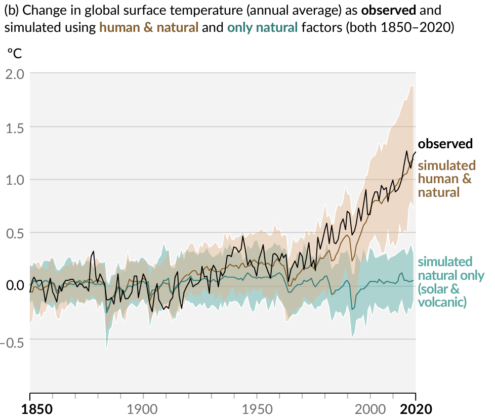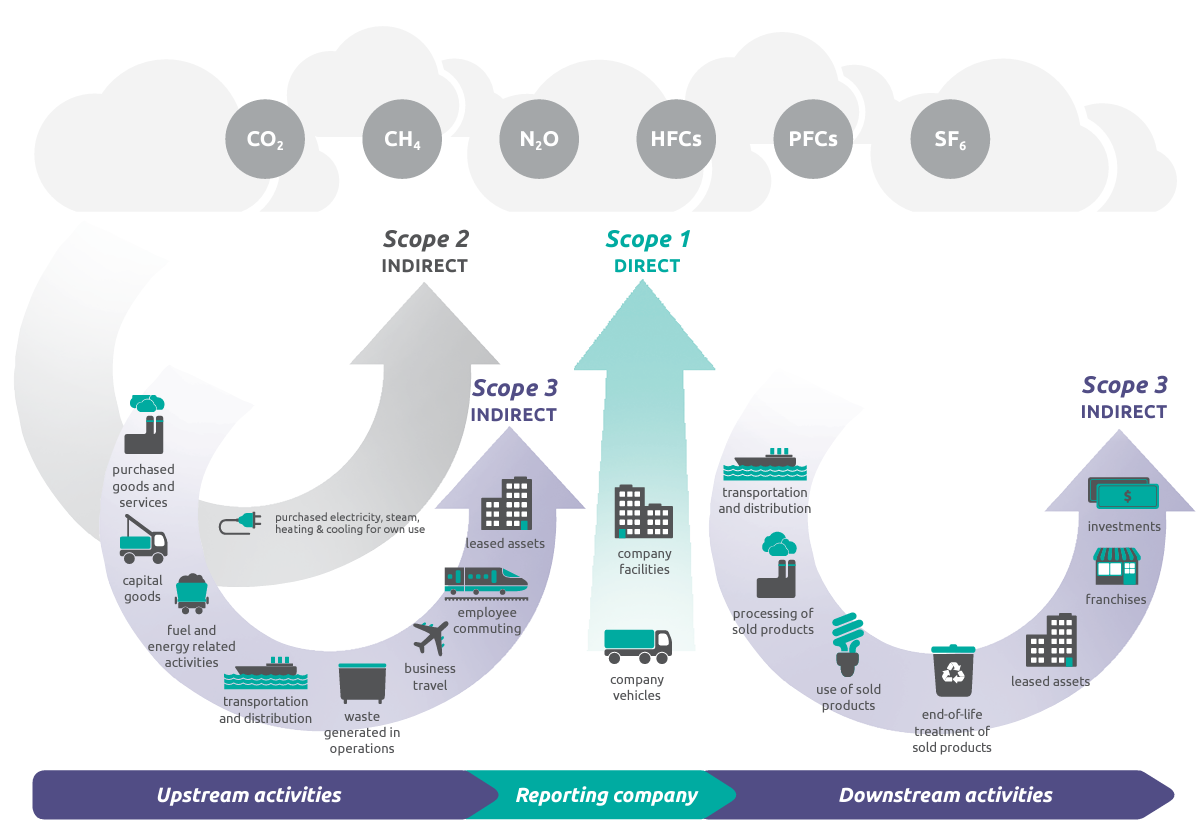
Ever since the industrial revolution in the 1800s, we have been increasingly pumping gases into the atmosphere, causing the earth to heat up faster than any other time in the planet’s history. Anything we burn gives off these gases, carbon dioxide in the main, whether for electricity generation, space heating, vehicle fuels, industrial processes, deforestation, composting or animal farming.
Earth has been much hotter in the past, but the current rate of change is unprecedented. Moreover, global warming is happening in people’s lifetimes rather than geological timescales. The consequence is melting polar ice caps, rising sea levels, and more frequent and extreme weather events.
The Intergovernmental Panel on Climate Change (The IPCC) is the United Nations body for assessing the science related to climate change. The IPCC has said we should restrict any global temperature rises to no more than 1.5°C overall to avoid the worst effects. Reaching this is a truly global challenge.
In practice, you reduce your GHG emissions and also offset the emissions you can't stop emitting by implementing activities to absorb GHG emissions equal to those you cannot get rid of (e.g. purchasing offset credits).

Figure 1.1 Overview of GHG Protocol scopes and emissions across the value chain, Corporate Value Chain (Scope 3) Accounting and Reporting Standard, Greenhouse Gas Protocol, World Resources Institute {https://ghgprotocol.org/sites/default/files/standards/Corporate-Value-Chain-Accounting-Reporing-Standard_041613_2.pdf}
Sustainable Construction
Sustainable Design with the City of Whittlesea
Web link
Sustainable Construction
Landscaping Network’s tips for using recycled materials in landscape and park projects
Web link
Sustainable Construction
Sustainable Design with the City of Port Phillip
Web link
Sustainable Procurement
Good Environmental Choice Australia’s ecolabel and recommendations for certified products
Web link
A pocket guide to climate change – ABC News
Web link
Ask a Stupid Question Day 2020 – Part 6 – Better Sydney, Downer, ISCA
Video
Ask a Stupid Question Day 2020 – Part 7 – Better Sydney, ISCA, Downer
Video
Ask a Stupid Question Day 2020 – Part 9 – Downer, ISCA
Video
Sustainable Procurement
Value of sustainable procurement practices
Web link
Sustainable Construction
Sustainability Victoria’s guide to Recycled Materials in Pavement Construction
Web link
Point of No Returns – Climate Change
Document / Presentation
Modern Slavery
July 2018 Policy Update: Human rights and Modern Slavery
Document/Presentation
Waste
The City of Melbourne’s Waste and Recycling Projects video
Web link
Tasmania’s Top Climate Change Questions Answered
Video
Beyond Zero Emissions – Million Jobs Plan
Document / Presentation
Two years on from the Engineering Declaration of a Climate and Biodiversity Emergency – what does effective action look like?
Video
A new choice: Australia’s climate for growth – Deloitte Access Economics
Web link
Sustainable Construction
Fleet Partners’ Green Guide: Best Practice Guide to driving a greener path
Web link
Sustainable Construction
Case Studies: Green Building Council of Australia
Web link
Wellbeing
Climate Change Risk Disclosure
Web link


 10 minutes
10 minutes